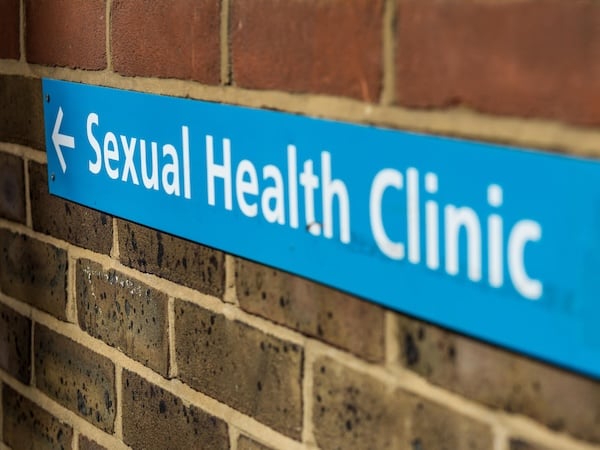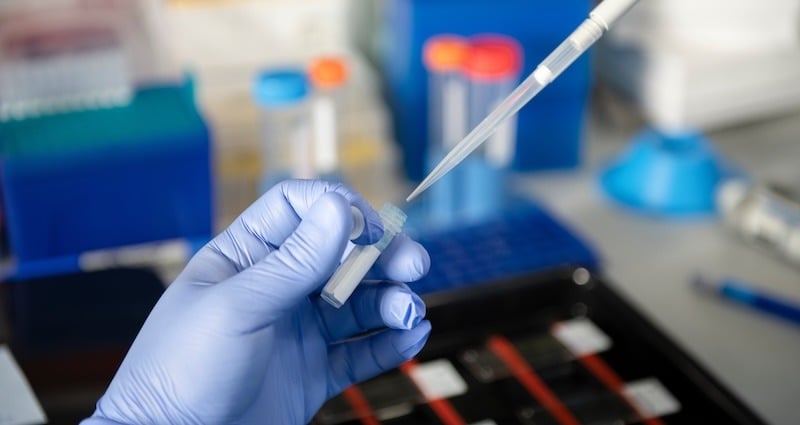
According to the US Centers for Disease Control and Prevention (CDC), yet again, more than 2.5 million cases of chlamydia, gonorrhea and syphilis were reported in the United States in 2022. According to the annual Sexually Transmitted Disease Surveillance Report released in 2022, most of these new diagnoses (1.6 million) were cases of chlamydia.
There were also 648,056 gonorrhea cases and almost 203,500 cases of primary and secondary syphilis – the most infectious stages of the disease.
All three of these STDs can be cured with antibiotics. But if left undiagnosed and untreated, they can have serious health consequences, including infertility, life-threatening ectopic pregnancy, stillbirth in infants, and increased risk for HIV transmission.
Though syphilis is confirmed via blood test, both gonorrhea and chlamydia tests can be conducted with swab samples of the genitals, throat, or anus. That's why we've put together this basic primer on how to take various swab samples used to test for gonorrhea and chlamydia.
Common STDs: An Overview
Due to their prevalence and potential impact on health, it is common to test for these STDs:
- Chlamydia and Gonorrhea: Often asymptomatic, these bacterial infections can lead to serious reproductive health issues if left untreated.
- Syphilis: A bacterial infection that progresses through several stages, it can cause serious health problems if not treated in its early stages.
- Human Papillomavirus (HPV): A viral infection that can lead to genital warts and cervical cancer.
- Herpes Simplex Virus (HSV): HSV-1 typically causes oral herpes, while HSV-2 is usually responsible for genital herpes.
- HIV: Human Immunodeficiency Virus, which can lead to AIDS if not treated.
Understanding these STDs and their potential health impacts underscores the importance of regular testing, especially in sexually active individuals and those with risk factors.
The Necessity of Precision in STD Testing
With case numbers of these and other STDs on the rise, accurate and efficient testing for conditions like gonorrhea and chlamydia is more important than ever. This comprehensive guide delves into the best practices for swabbing in STD testing, highlighting the role of medical professionals, the best swabs for the procedure, and a detailed how-to guide for rectal swabbing.
Who Should Conduct STD Testing
STD testing should be conducted by qualified medical professionals who:
- Understand the Intricacies: These professionals are experienced in STD testing protocols and patient care.
- Follow Updated Guidelines: They stay abreast with the latest CDC and healthcare guidelines for accurate testing.
- Ensure Patient Comfort: They maintain a compassionate approach for a sensitive and respectful testing environment.
How Often to Swab for STDs
Understanding the frequency of STD testing is crucial for maintaining sexual health. The frequency of swabbing for STDs can vary based on individual circumstances, but general guidelines include:
- Sexually Active Adults: Annually for sexually active individuals. This is a baseline recommendation, but more frequent testing may be needed depending on risk factors.
- Multiple or New Partners: Those with multiple sexual partners or new partners should consider more frequent testing, possibly every 3 to 6 months.
- After Unprotected Sex: It’s advisable to get tested after engaging in unprotected sex with a new partner or if there's a possibility of exposure to an STD.
- High-Risk Groups: Men who have sex with men (MSM), individuals with HIV, and those with partners who have tested positive for an STD should undergo more frequent testing.
- Pregnant Women: Routine screening for STDs is recommended during pregnancy as some STDs can affect both the mother and the baby.
Regular testing is important because many STDs can be asymptomatic, meaning they show no symptoms but can still cause health issues and be transmitted to others.
For more guidance on frequency of testing, visit the CDC’s website.
Best Swabs for STD Testing
For STD testing, particularly gonorrhea and chlamydia, the choice of swab is crucial. Products ideally suited for this purpose include:
- Polyester: 25-806 1PD, 25-806 1PD BT, 25-1000 PD
- Rayon: 25-806 1PR, 25-806 1PR BT, 25-800 R 50
- Flock: 25-3706-U, 25-3706-U BT, 25-3317-U
How to Collect an STD Samples
Now that we’ve covered those important details, let’s jump into testing for various STDs with specific swabbing techniques.
Endocervical Swabbing for STDs
A woman's endocervix, the area around the opening of the uterus, is the preferred site for specimens from females. It's recommended that specimen collection should be done with a sterile swab and not a Cytobrush. Harsher brushes may cause trauma and bleeding that can corrupt the specimen.
Use two swabs: one to clean the cervix to remove excess mucus, and another to collect the sample.
For gonorrhea testing, an ideal choice in swab includes a transport and collection system.
-
Peel open the sterile pouch
-
Remove the swab applicator and collect specimens by rotating the swab against the wall of the endocervical canal several times.
-
Rotate the swab against the wall of the endocervical canal several times for 20-30 seconds
-
Withdraw the swab without touching the vaginal surface
-
Insert swab into the transport tube
-
Record patient information in space provided on the label
-
Transport specimen to laboratory to be processed
Urethral Swabbing for STDs
The urethra is a tube that drains urine from the bladder. This is the preferred culture site in men, or in women with no cervix. Specimens should be taken no earlier than two hours after the patient has last voided his or her bladder.
-
Gently insert the swab into the urethra (1-2 cm for women, 2-4 cm for men)
-
Rotate the swab in one direction for a minimum of 10 seconds
-
Withdraw the swab
-
Break the swab handle at scored breakpoint line
-
Label the vial with appropriate patient information
-
Seal the transport tube, allowing the specimen to be exposed to the appropriate transport media
Throat Swabbing for STDs
Chlamydia can be spread to the throat during oral sex, despite most frequently infecting the cervix, urethra or rectum. Pharyngeal swabbing is the preferred method of specimen collection, which involves swabbing the area behind the nasal cavities, mouth, and larynx.
-
Use a sterile flocked swab that comes with a transport medium filled vial, ex: Universal Transport Media system
-
Have the patient tilt their head backwards, open their mouth, and stick out their tongue
-
Without touching the side of the mouth, swab the posterior nasopharynx and the tonsillar arches
-
Remove swab and insert into a vial containing 1-3 ml of transport medium
-
Break the swab handle at scored breakpoint line
-
Label the vial with appropriate patient information
Rectal Swabbing for STDs
Gonorrhea and chlamydia often occur simultaneously because the risk factors are very similar. Patients who are suspected of having one of these sexually transmitted bacterial infections are usually tested for the other as well.
-
Insert a sterile swab approximately 2.5 cm into the anal canal
-
Move swab from side to side in the anal canal
-
Allow swab to remain 10-30 seconds for absorption of organisms onto the swab
-
Remove swab and insert into a vial containing 1-3 ml of viral transport media
-
Label the vial with appropriate patient information
You’re Officially Prepared to Swab for STDs
We hope you find this guide for gonorrhea and chlamydia specimen collection helpful. For more information on these procedures or products to conduct them, feel free to contact our helpful product specialists today.





